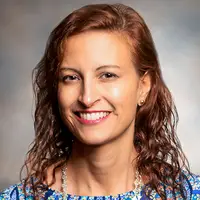In my senior year of college my roommate, Victoria* was hit by a car. She was trying to cross the street after getting off a bus. The bus driver waited for her to cross in front of him, but the impatient driver of the car that crossed over the double yellow line to pass the bus, didn’t. After multiple surgeries involving more than a few pieces of titanium embedded in her body, Victoria finally came back to school in a wheelchair. No longer able to live in the dorm built into the side of the hill where we had started the semester due to its lack of ramps or elevators, we moved to the other side of campus.
There, Campus Facilities installed automated doors, a shower rail and chair, and built a desk that could accommodate Victoria’s wheelchair. A few days a week a campus police officer would pick her up and drive her to those classes that were too far uphill to be expected to push her. I will always remember how our university was extremely helpful in making sure she could attend classes, navigate campus, and attend to her personal needs, but I shudder to think what that semester might have been like three years prior.
Two and a half years before Victoria’s accident, in July of 1990, the U.S. Congress passed the Americans with Disabilities Act (ADA), prohibiting discrimination against anyone who:
- has a physical or mental impairment that substantially limits one or more major life activities,
- has a history or record of such an impairment (such as cancer that is in remission), or
- is perceived by others as having such an impairment (such as a person who has scars from a severe burn).
Prior to the law being passed, Victoria’s experience at school might not have been what it was. She might not have been able to attend classes, graduate, go on to become a doctor in the hospital where she now saves children’s lives daily. This is only one example of how the ADA made a difference.
According to the U.S. Centers for Disease Control and Prevention (CDC), “one in 4 U.S. adults – 61 million Americans – have a disability that impacts major life activities” According to the World Health Organization, as of November of 2021, over 1 billion individuals are disabled around the world and the rates are increasing due to chronic health conditions and the aging of the Earth’s population.
Victoria had an obvious disability that “limited her major life activities,” but what about those who have disabilities we can’t see? Many disabilities are visible, while others are not. Here are just a few*, that we might not think about on a regular basis:
- Autism
- Autoimmune disorders, for example: lupus, fibromyalgia, rheumatoid arthritis, type I diabetes, HIV, or AIDS
- Blind or low vision
- Cancer
- Cardiovascular or heart disease
- Celiac disease
- Cerebral palsy
- Deaf or hard of hearing
- Depression or anxiety
- Type II Diabetes
- Epilepsy
- Gastrointestinal disorders, for example: Crohn's Disease, or irritable bowel syndrome
- Intellectual disability
- Missing limbs or partially missing limbs
- Nervous system condition for example: migraine headaches, Parkinson’s disease, or Multiple sclerosis (MS)
- Psychiatric condition, for example: bipolar disorder, schizophrenia, PTSD, or major depression
Victoria’s injuries eventually healed. She no longer uses a wheelchair, but when I think back on that semester I can’t help but remember all the ways her life changed, e.g. needing a ride to class, moving dorms, not being able to wear any sort of pullover shirt or sweater, having to use the largest stall in the bathroom to accommodate her wheelchair, needing someone to push her everywhere because one arm was in a sling, having to constantly move furniture or ask people to move so she could get by – there were so many moments when she had to adjust the way she did things.
Individually, these could be construed as seemingly minor adjustments to one’s life, but in aggregate they represented a significant investment of Victoria’s time, as well as her mental and emotional labor. But compared to the number of times strangers averted their eyes or gave her pitying looks when they saw her in her wheelchair, those were indeed minor inconveniences. People underestimated Victoria. Despite her injuries, she was still the same incredible person she had always been, that hadn’t changed. As her roommate, living with her through this experience gave me a much greater awareness of and appreciation for individuals with disabilities, of all kinds.
This month I encourage you to consider how you might make your personal or professional environment more accessible to others. Some possible examples:
- Learn how to portray someone with a disability - what words to avoid and which ones to use.
- Learn more about the 7 Principles of Universal Design, (creating environments where people do not have to request accommodations because they are already designed in a way that allows everyone to access resources).
- Deliberately turn on closed captioning or ask that it be turned on for every Zoom call you attend so anyone with a hearing impairment can still see and participate in the conversation.
- Use Alt Text for people who use screen readers to access websites. (Alt Text is the written copy that appears in place of an image on a webpage and helps screen-reading tools describe images.)
- Ask in advance what allergies, intolerances, other food restrictions or needs attendees might have when planning a meeting that involves food.
- Include subtitles and transcripts if you are uploading videos to a website.
- Share what you learn with those around you, so they can make a difference as well.
Together we can build a more inclusive environment for our colleagues, friends, and family who have a accessibility needs. What might you be able to do differently to better include someone today?
*Name changed to protect her identity.
